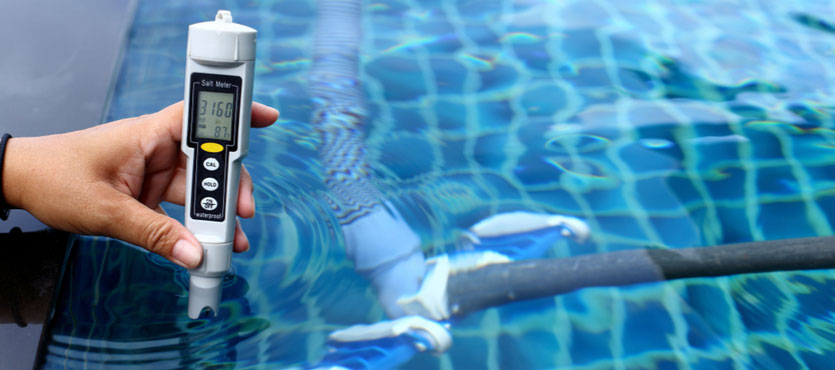A salt cell, or salt generator, is used for a salt water pool and is responsible for generating chlorine. Salt water pools still rely on chlorine to sanitize water, but chlorine is added differently than it is with a traditional chlorinated pool. Salt cells work by transforming sodium chloride (aka table salt) into chlorine. Salt cells work through a process known as electrolysis. Since salt water has an electrical charge, it splits the salt molecules and produces chlorine.
Two Main Components of a Salt Cell
To understand how a salt cell works, it’s important to know how it’s made. A salt cell includes two main components:
- The cell—responsible for turning salt into chlorine
- The control board—gives you control over chlorine levels
These two parts work together, starting with water moving through the cell and over blades covered in a naturally occurring metal, such as ruthenium or iridium. These metals are charged by the control board because it produces electricity. Not only does the control board allow you to control chlorine levels, but in addition, it gives you the power to synch a salt chlorinator to a pool automation system and control the entire thing via a remote control or mobile device.
Do Salt Water Pools Really Require Zero Maintenance?
A common misconception about salt water pools is that they never require any maintenance. It is true that they require less maintenance, but chemicals still must be regularly checked and followed up with. In addition, you’ll need to add salt to your pool based on usage and time of year.
Salt cells should be looked over at least once every three months, looking for things like excess buildup of calcium on blades (this needs to be cleaned asap!).
What are the Benefits of a Salt Cell?
- Stop buying and storing bulky jugs of chlorine
- It is easier to alter chlorine levels—it’s as simple as pressing a button
- Water has a softer feel and is easier on skin, swimsuits, hair, and other materials
- Reduced chlorine smell
- A salt cell offers even distribution of chlorine whenever the pump is turned on. As a result, chemical levels show reduced fluctuation and you can maintain healthier pool chemistry without as much work.
Can You Convert an Existing Pool to a Salt Water System?
- Yes! You can add a salt generator to a new pool or an existing pool.
How to Make Your Salt Chlorine Generator Last Longer
A salt cell that undergoes regular maintenance can last anywhere from three to seven or more years. There are two things that greatly reduce the life expectancy of a salt cell: cleaning it too much or cleaning it improperly.
The chlorinator cell creates chlorine, a process that naturally leads to scaling on metallic grids. If this buildup continues without maintenance, it’ll decrease the performance of the salt cell. This buildup is cleaned by submerging it in a mild acid solution to dissolve the scales. If you conduct this process too often, it leads to erosion of the coating on titanium grids. The same problem is likely to occur if you use a highly-concentrated acid solution.
The control board can break down for unrelated reasons, namely because it’s an electrical component with an electrical internal circuit board.
So, how can you ensure your salt water system works for as long as possible?
- Have a professional maintain pool equipment on a regular basis.
- Check your pool to ensure consistent salt levels remain around 2700 to 3900 ppm.
- Have the chlorinator cell cleaned one time each season.
- If there’s a lightning storm, turn off pool equipment.
- Maintain low calcium levels that meet manufacturer guidelines.

